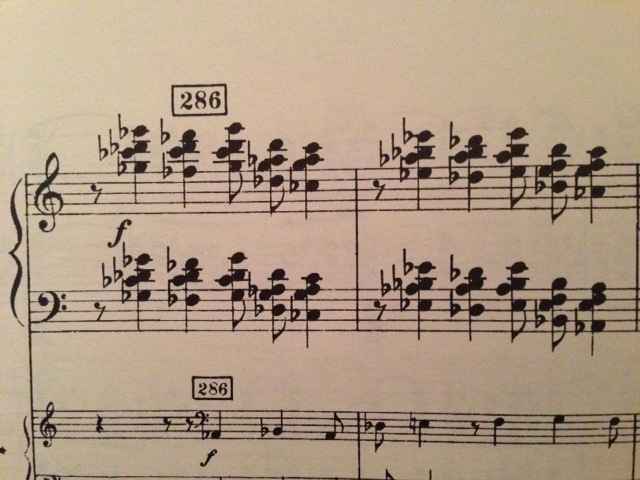How to finger chords on the piano


In my previous post, piano technique: playing the c major scale, I mentioned couple of things about fingering and positioning your hand, when playing the piano. Playing scales as well as chord progressions and sequences on the piano are essential when talking about technique. Chord fingering on the piano is a very broad topic. Today, I’d like to give you some ideas of how to make a chord look a little easier for your eyes to read, and how to make it easier to play without analysis of the piece or chord progression to be required.
Music written for piano uses two staves and clefs, instead of only one as for other instruments, making chord reading even more difficult.


When playing from a piano score, you have to train your eyes to read the music fast enough so your hands can produce these written sounds on the keyboard. You'll frequently have to play chords with both hands and these chords will be built with three or four voices each.
How we can make it easier to read and play them at the same time quickly?
How to finger chords on the piano
Learn the best steps to finger chords on the piano.
1. Find the similarities between the chords
Look at the chords and see how they connect to each other, how they move, and where all voices go. Most of the time there will be voices that stay the same for at least couple of chords in a row. If you find the common notes between chords, it will be helpful for you to prepare your hand position in advance, and decide what fingering will be smoother for the connection between the chords.
You will also notice that many times the notes in a second chord are adjacent, or nearby, notes in a first chord.
2. Find the skips and steps. Read the intervals.
The piano is very visual instrument. Skips (moving between notes that are not adjacent, like playing A then D), steps (moving between adjacent notes like A to B) and their directions (did you up or down?) play a huge role and are extremely important for understanding the keyboard, and feeling confident when you play. Try to look at chords as a whole frame and see how the voices move inside.
Does the top note of the first chord move up or down to the top note of the second chord?
Does the middle note of the first chord move up or down to the middle note of the second chord?
Octaves in the right hand are usually played with 1 (thumb) on the lower voice and 5 (pinky) on the higher voice. Inner voices have to be connected as smoothly as possible, so select fingerings that make the connections smooth. If you move up, change your fingering stepping up. If the chords move down, change your fingering stepping or skipping down.
Sometimes you will need to do a silent fingering change in order to have a smooth connection between chords. Silent change of your fingering means to keep the key down but change the finger that is holding the same key down. This is technique usually used when playing slow passages and you want to continue voice leading the melody without interrupting the phrase with any breaks.
3. Separate the chords into two parts.
Separate the chords into two parts which are the distance between the notes, and the distance between the fingers.
Chords are built from intervals, or the distance between two notes. See how comfortable it will be to make the hand stretch without making any awkward movements. Position your hand and fingers in a way that will require less or almost no change of position between chords.
If you can make it look easy, it will be easy!
4. Work on coordination.
Chord fingering on the piano, as same as scales, will be exactly the opposite for both hands. For example while the left hand plays finger 1, the right will play finger 5. Most often, the hands will move parallel motion, but sometimes they will move in contrary motion. Thinking of them in this way can help simplify your thinking.
5. Read Ahead.
While you preparing to play the first two chords you should be looking at those two chords. But as soon as your fingers know where to go, get your eyes ahead to the next chords. By reading ahead, you can prepare to play the chords before you actually have to play them. This will save you time and make your playing more fluid.
6. Control
Be patient, and prepare for a lot of repetitions in your practice to master this skill . Stay positive and think ahead. Your hands are unique and must be controlled by your brain. You are the one who will make them work the way you want, by controlling them consciously.
Related



Staff
